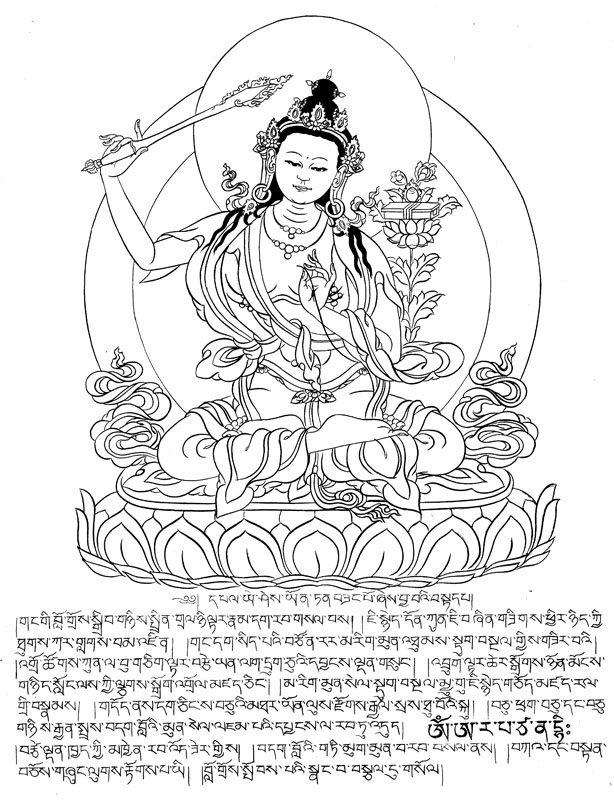page TWENTY THREE, Sayadaw discusses how important the understanding of various types of consciousnesses can be, and lists them, from the Satipattana Sutta, those associated with and without lust and hatred, delusion, those that are tired and agitated. On the psychiatric unit in therapy group, we start with sharing about the body, and then emotions and share the connections.
It all sheds light on the subject, which is a challenge worth taking; some of it is practice, some of it is support, some of it is effort, and some of it is letting go. I paste an article I wrote today for the paper:
Faith’s
Bright Light
I work on a psychiatric unit in New Jersey, primarily with
lower-income patients of various backgrounds. We use a ‘Wellness Recovery
Action Plan’; a binder that each patient can take home that helps people with
bipolar disorder, depression and other mental health problems to learn new
coping skills. The Spirituality section is quite short; it only asks “How do
you define spirituality for yourself?” and “List some action steps:”
In our morning Goals group, one young lady recently smiled
as she stated she began church again after a long absence.
Another said to her “Yes, all you have to do
is get back in the door and leave the devil behind.” From across the table
someone else offered “Oh but the devil is inside the building too.”
These are challenging conversations for a social worker, not
only in finding a way for everyone to express a personal matter, but in working
with my own feelings as well.
Mostly I
try to learn from others and keep my beliefs out of it, but I am comfortable
sharing some generalities.
A few ‘truisms’ I have discovered are that most people have
some sort of spiritual view and get something positive when they practice it;
most people at one time or another have difficulty practicing it; and returning
to spiritual practice is even more difficult when there are blocks to
self-acceptance.
Sometimes when introducing the topic I ask if spiritual
practice is challenging because it ‘shines a light’ on every part of us.
Most people agree, and this question can lead
to a discussion about acceptance.
Why
is it, when our faith practices offer unconditional acceptance (I could offer
quotes from every faith here) that we have difficulty ‘walking back through the
door’ to pray, meditate, or listen?
Mark Twain once said “But who prays for Satan,. . he being
among sinners the supremest?” That may be the crux of our struggle with
spirituality, the acceptance of the way we are, the way things are.
And self-acceptance is not resignation; it’s
a way to truly begin knowing and seeing what we are so that we can grow.
I sometimes hold up a crumpled piece of
paper and suggest, “If we want to become well, let’s say like a smooth sheet of
paper, how to do it?”
The answer of
course is to work with the folds and crinkles that we are made of now.
Rumi writes: “This being human is a guest house. Every
morning a new arrival. A joy, a depression, a meanness, some momentary
awareness comes as an unexpected visitor. Welcome and entertain them all! Even
if they're a crowd of sorrows, who violently sweep your house empty of its
furniture, still, treat each guest honorably. He may be clearing you out for
some new delight.”
Sometimes work on the unit is like Rumi’s guest house,
crowded with unrestrained emotion. Group therapy is the most difficult group
for me; it's just a big circle where we share feelings. Part of my work is
‘getting out of the way’, allowing for the expression of pain without
over-managing it, and part of it is allowing my own ‘guest house’ to be visited
and cleared out. Today I let the group wait in silence while a member danced
around her true feelings.
I felt
everyone’s discomfort and desire to move on.
And then she told us that today was the anniversary of a family suicide
she discovered.
Now the group and I had some serious pain on the table in
front of us.
The speaker offered a
number of practical ways for dealing with the anniversary. I remembered another
quote from Rumi, “Keep looking at the bandaged place, that’s where the light
enters you.”
I waited with my own
discomfort and looking at her moist eyes asked her to express her feelings.
Waves of tears and anger followed.
This
particular group is encouraged NOT to run in with tissues and hugs, and they
didn't. They waited, practicing patience and acceptance of their own
feelings.
In the end, she was able to
take the support of the group home with her to visit the graveside.
I sat in meditation all day Saturday at the Makefield
Meeting house with our Buddhist group. It was terribly hot, and my knees hurt.
My mind was like a bad movie. But we sit all
day for the same reason we don’t rush in with tissues at the first teardrop,
for the same reason we don’t lock the door on a grumpy friend. At the end of
the day we showed the same respect for our insights, our sorrows and our joys,
we shared them and did not force them to stay or go before their time, because
they are visitors also.
Faith 'shines a light' on every part of us, light and dark -
our generosity and kindness, selfishness and jealousy, anger and joy. It is a
challenge to take in all states as equally and fully human, find some thread of
compassion in our own fathom-long body for our own bursting heart and even for
the devil beside us. It's a journey with unexpected twists and turns.
On the ride home, I was wishing for my sunglasses, it
was so bright outside. But truth be told, it was bright inside, too.
 "This Dependent Origination is profound", quotes Sayadaw from the
Bhvacakra Sutra, and 'this generation...' through NOT understanding, and
NOT penetrating, has become a tangled skein.
"This Dependent Origination is profound", quotes Sayadaw from the
Bhvacakra Sutra, and 'this generation...' through NOT understanding, and
NOT penetrating, has become a tangled skein.
 on PAGE TWENTY SEVEN, we are reminded that the Second Noble Truth is an insight which then requires application of the Third Noble Truth which Sayadaw puts in terms of the cessation of the links in dependent origination. Also, seeing those links, and 'the momentary cessation of formations.' I consider insight, the antidote to ignorance. I place ignorance in this plane, this narrative, this story. I worry that there is nothing more. I suggest to myself that enlightenment must be only a thought, and not transformative. I see so little of value that proceeds from the mind. I wonder what qualities mentality and materiality might have in common, or the link that they have. It's just my partiality to things that seem more permanent, even the quick sunset seems to promise many years of sunset. It is just a little more steady and longlasting than my mind.
on PAGE TWENTY SEVEN, we are reminded that the Second Noble Truth is an insight which then requires application of the Third Noble Truth which Sayadaw puts in terms of the cessation of the links in dependent origination. Also, seeing those links, and 'the momentary cessation of formations.' I consider insight, the antidote to ignorance. I place ignorance in this plane, this narrative, this story. I worry that there is nothing more. I suggest to myself that enlightenment must be only a thought, and not transformative. I see so little of value that proceeds from the mind. I wonder what qualities mentality and materiality might have in common, or the link that they have. It's just my partiality to things that seem more permanent, even the quick sunset seems to promise many years of sunset. It is just a little more steady and longlasting than my mind.

j!~~60_35.JPG)





 the end of page sixteen and PAGE SEVENTEEN is where Sayadaw adds to the concentration and arising of light with the protection of concentration through the four Bramaviharas of Metta (lovingkindness), Karuna (compassion), Mudita (appreciative joy) and Upekkha (equanimity). It is interesting, how they may be protective of meditation, but they make much sense. Metta to overcome hatred, Karuna to overcome ill-will, Mudita to overcome envy, and Upekkha to overcome indifference. I'm especially taken with equanimity, which I sometimes confuse with indifference. On the one hand, a little bit of seeing everything without pulling might take some turning away, some reduction in looking for details that match our agenda. That can lead to a profound flattening. Bikkhu Bodhi writes;
the end of page sixteen and PAGE SEVENTEEN is where Sayadaw adds to the concentration and arising of light with the protection of concentration through the four Bramaviharas of Metta (lovingkindness), Karuna (compassion), Mudita (appreciative joy) and Upekkha (equanimity). It is interesting, how they may be protective of meditation, but they make much sense. Metta to overcome hatred, Karuna to overcome ill-will, Mudita to overcome envy, and Upekkha to overcome indifference. I'm especially taken with equanimity, which I sometimes confuse with indifference. On the one hand, a little bit of seeing everything without pulling might take some turning away, some reduction in looking for details that match our agenda. That can lead to a profound flattening. Bikkhu Bodhi writes;



 Also, it is then like a petri dish if one is not careful, because of the rich medium that incarnation brings. I don't yet know why we are protected as babies, and I suppose only some of us are, from so many opportunistic infections of the mind.
Also, it is then like a petri dish if one is not careful, because of the rich medium that incarnation brings. I don't yet know why we are protected as babies, and I suppose only some of us are, from so many opportunistic infections of the mind. 


